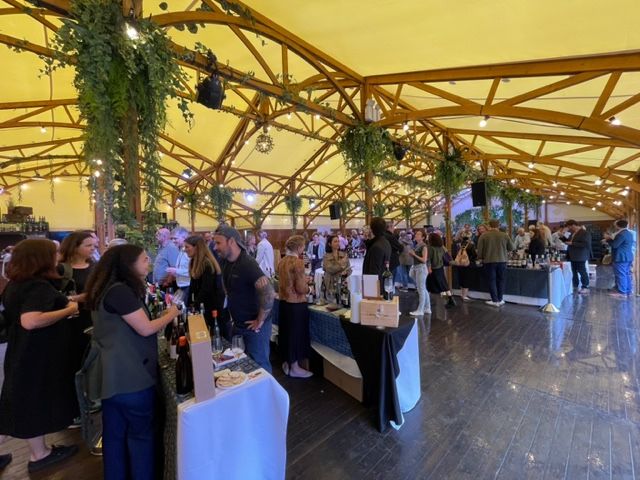“This is a confident industry producing world-class wines, and for the first time it seems that everyone’s in on it,” writes Wilson about the new South African wines.
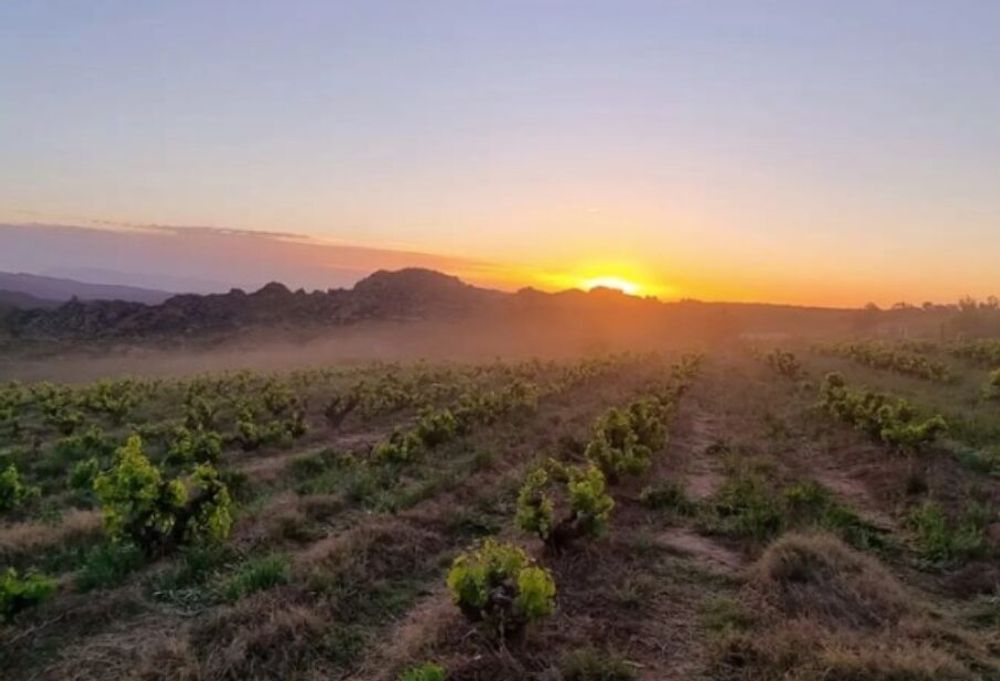
“Old Chenin is the real white wine story of the future,” says André Morgenthal
There was a musical movement in the early 1990s called the New Wave of New Wave (NWONW). It competed with other such short-lived – and often terribly named – movements of the time such as C86, Grebo, Shoegaze and The Scene That Celebrates Itself.
NWONW came after New Wave – of course it did – but can the same be true of South African wine? After the ‘New Wave South Africa’ scene of the late 2010s, which cemented South Africa as the most exciting place on the planet to make wine and made household names of a handful of young, dynamic producers, what happened next?
Well it wasn’t New Wave Mark 2, what has happened is even more interesting. Speaking to winemakers, winery owners and importers at the recent Encounter South Africa tasting in London – Wines of South Africa’s first large UK tasting post-Covid – it’s clear that things have moved forward from the New Wave scene with South African wine today focussed around a new found confidence in more traditional styles and a ‘less-is-more’ ethos.
Back to the future
New Wave was a shot in the arm for the industry as a whole, a confidence boost for winemakers across the board – those doing new things and those who were staunchly conservative in their approach – and it made people realise what they already had on the table in front of them.
This has resulted in the bottom of the industry being raised up, improving the quality and landscape of South African wine from entry level upwards. Winemakers in general are using less new oak, fewer additives (not throwing the whole Laffort catalogue at wines, as one winemaker put it) and making things in a more natural way where less is more. The result is better wines, which are being better received by consumers and critics alike.
“There’s been an overall quality increase, scores are higher internationally and as an industry we are making better wine,” says Samantha O’Keefe from Lismore Estate Vineyards. She says that she’s slowly noticed this shift over the past few years, but it really hit home at the Cape Wine international expo in Cape Town last October.
“There was a quiet confidence rather than an overexcited buzz,” she says. “This relative quietness in the hall spoke volumes, there was less expectation because everyone knows that the wines are good.”
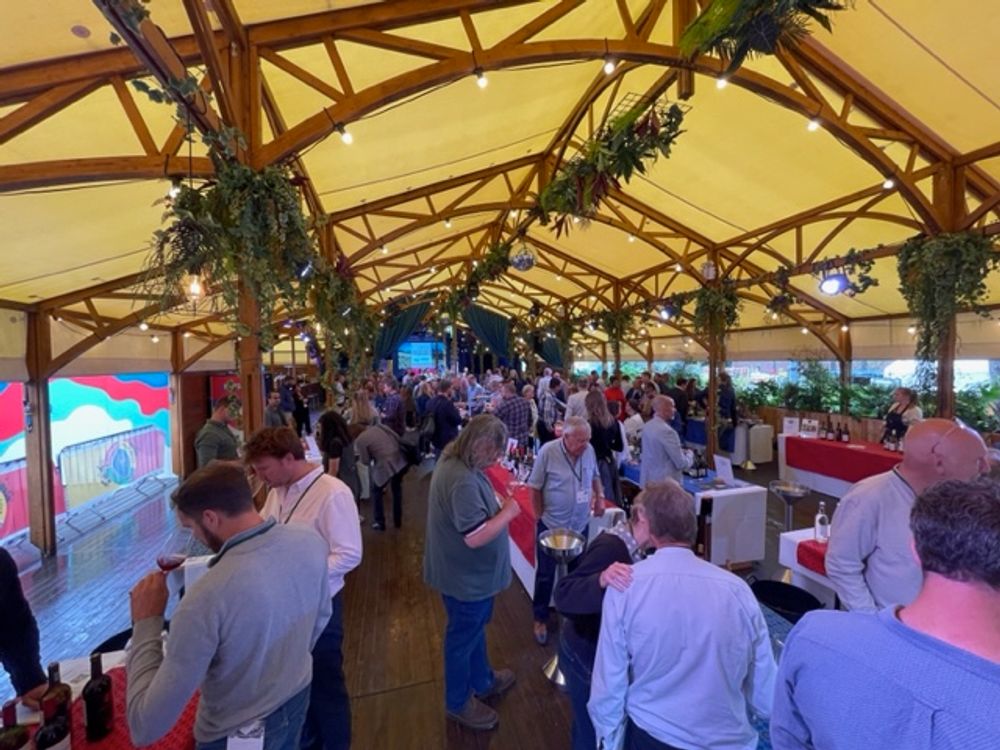
Quiet buzz in the room at Encounter South Africa – new South African wine
There was a similar vibe at Encounter South Africa, an understated excitement about showing new wines to an eager crowd. There were many lesser-known and new producers here, and lots of wines that five years ago would have been passed off as passé, such as Bordeaux blends and single variety wines from well known places, like Stellenbosch or Paarl.
But today many of these wines are the stars of the show. Particularly rich in quality were classically styled red blends and whites from cool climate regions.
Hallgarten buyer Steve Daniel was fervent in his love of some of the cool climate white wines currently making their way into the UK market, particularly Sauvignon Blanc. “There is a new confidence in South Africa for Sauvignon Blanc,” he says. “They have upped their game in this area, and with New Zealand dropping the ball South Africa has stepped in.”
He believes that the style and flavour profile of Sauvignon from South Africa could be the future of this variety in the UK. “This is the style of wine we fell in love with in the first place,” he says.
Daniel was also banging the drum for Chenin Blanc, and there was a lot of quality Chenin on show, particularly in white blends. “People have really embraced Chenin and winemakers have enhanced its reputation over the past few years. I truly believe it is one of the grapes of the future,” he says.
André Morgenthal from the Old Vine Project – a non-profit company that celebrates and certifies vines and vineyards in South Africa that are 35 years and older – agrees. “Old Chenin is the real white wine story of the future,” he says. “Styles differ but they all express the sites in which they are grown, and white old vines are more expressive than reds.”
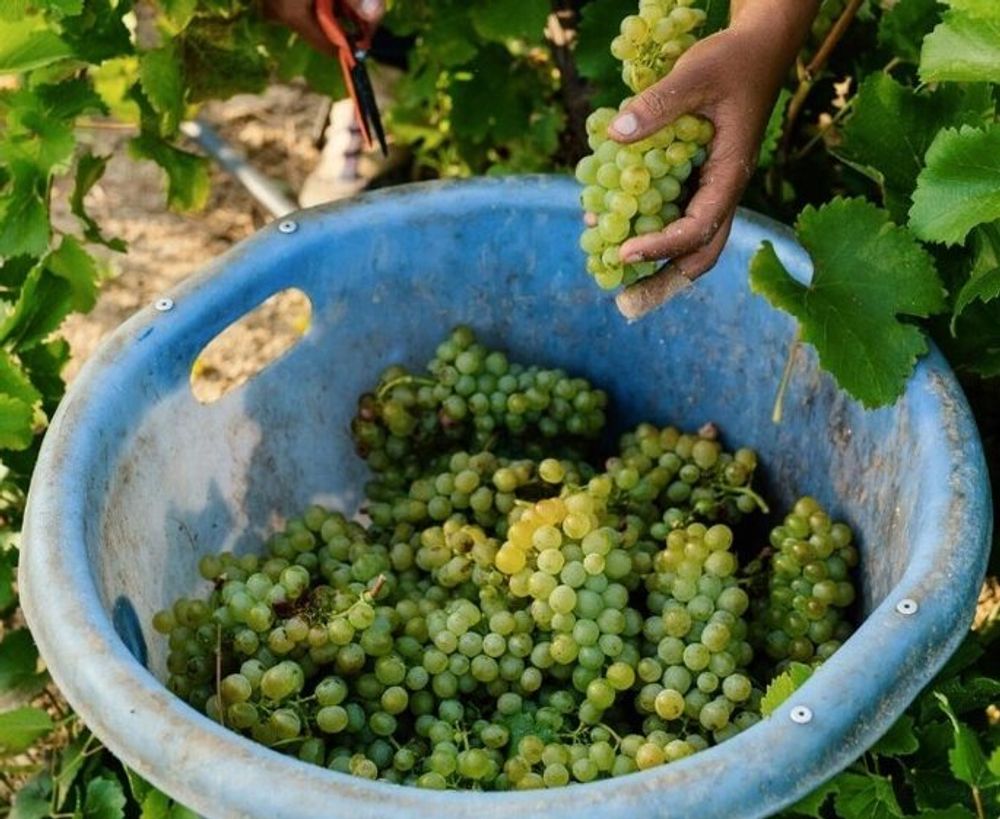
“You need good grapes and growers are paying attention to that and upping their game.”
Changes afoot in the vineyards
Another area which seems to be responsible for this overall shift in quality from the underbelly up is what growers are doing in the vineyard. Not all growers own vineyards and historically grapes have been grown as a cash crop, sold by weight rather than underlying quality, which provided a disconnect in the industry. How can you make great wines from average grapes?
Louis Boutinot from Waterkloof believes that there’s change afoot in the fields as well as the wineries now as those purchasing fruit are demanding better quality and – often – a say in how the farmer grows and harvests the grapes. “Overall people are making wine in a more natural way, and to do that you need good grapes and growers are paying attention to that and upping their game,” he says.
“Producers have found that their wines have improved as a result,“ he adds. Boutinot is also excited about the increase in plantings of grapes which are better suited to the warmer growing season, such as Assyrtiko and Mourvèdre, the latter being the most planted grape at Waterkloof. “Planting things that make sense is the future,” he says.
Tasting widely across price points and styles at this well-put-together event, and chatting to winemakers from varied backgrounds, it’s clear that the gold dust of the New Wave era is still present in South African wine, but the fanfare, the glitter and pizzazz is not quite so important anymore. This is a confident industry producing world-class wines, and for the first time it seems that everyone’s in on it.
10 stunning new South African wines

Domaine des Dieux Claudia Brut 2016
The quality of MCC on show was high, but this was stunning. Coming from Chardonnay and Pinot Noir vines grown at 320m in the Hemel-en-Aarde Ridge, it’s rich and honeyed with notes of dried apricot and lemon pie. The altitude helps to slow the ripening of the grapes and to retain natural acidity. Aged on the lees for five years, resulting in a lovely autolytic finish.
Ken Forrester Sauvignon Blanc Reserve 2022
Pithy and alive with tree fruit notes of ripe pear and red apple. There’s a wet grass tingle on the nose too, but it’s not overblown. More tropical fruit comes at the finish – fig, apricot – and is accompanied by a sweeping, refreshing acidity. A delicious smack in the mouth.
Sijnn White 2020
Built around barrel-aged bush vine Chenin Blanc, this waxy white blend also comprises Roussanne, Viognier and Verdelho. It’s full in the mouth with apricot and beeswax notes, but there’s a freshness too, a mineral zip which ties it all together. A wine which ‘tastes of a place rather than the varieties,’ says André Morgenthal, who was showing the wine as part of the Agulhas Wine Triangle programme.
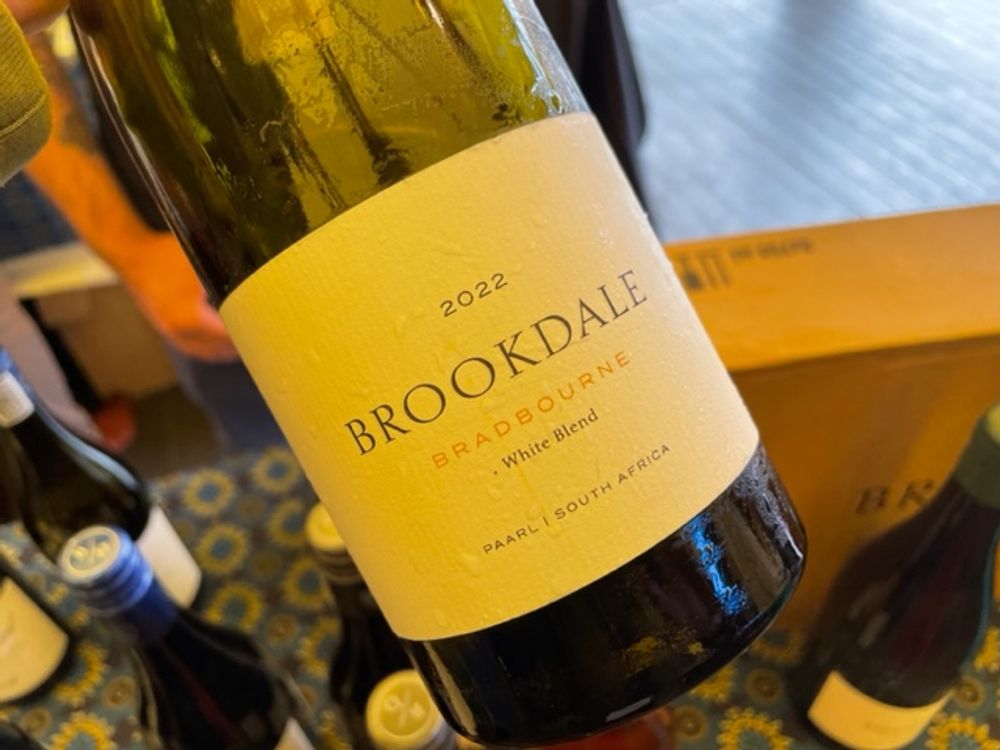
Brookdale Bradbourne White Blend 2022
A new producer to me, brought in by Museum Wines. Brookdale is based in Paarl and has a tidy collection of wines, the standout on the day being this 2022 White Blend. Comprising Grenache Blanc, Roussanne, Piquepoul Blanc and Marsanne, it’s generous and fleshy with tropical peach, cream and honey notes. Really bright and alive.
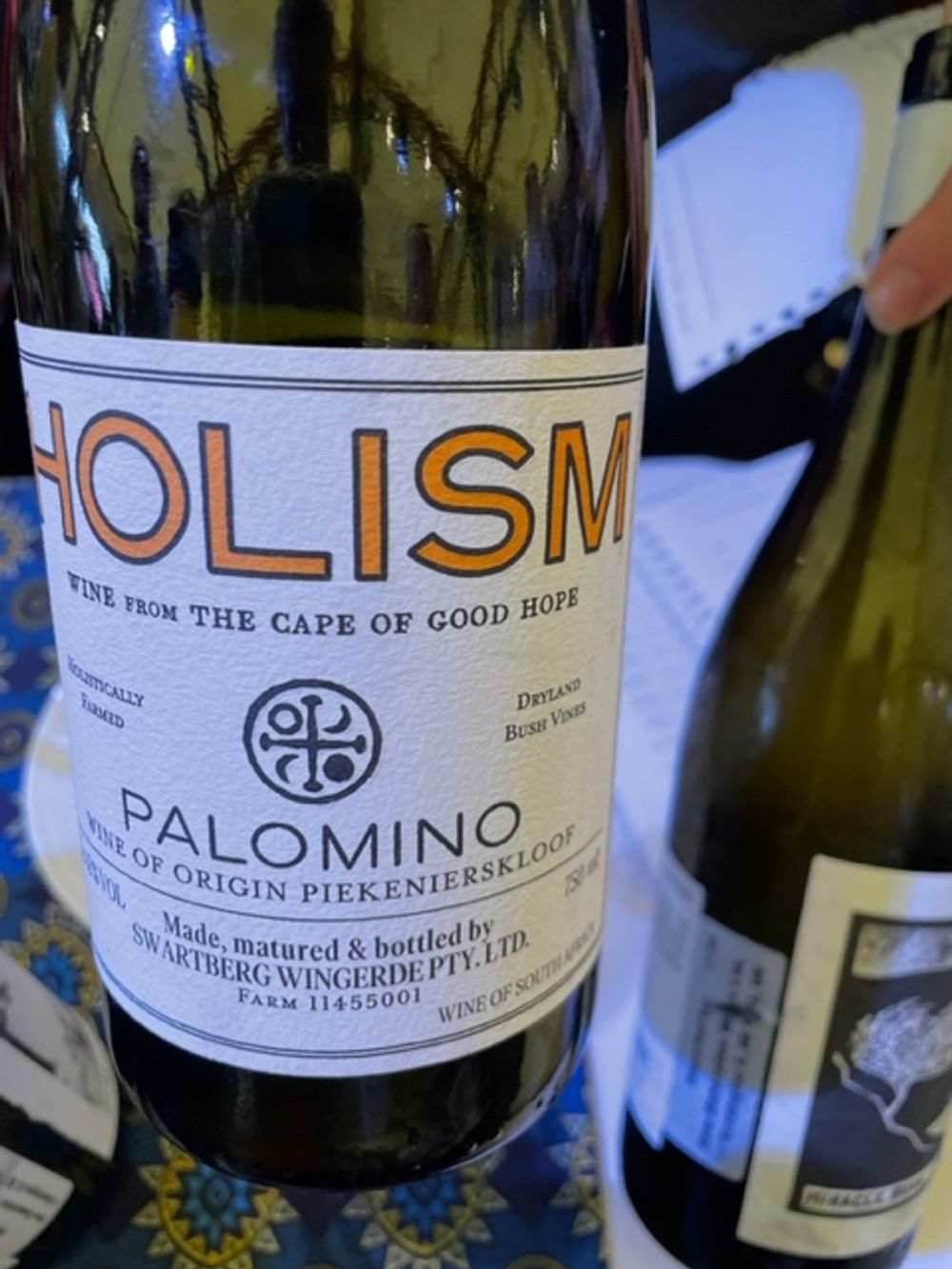
Holism Palomino 2021
Based in the Piekenierskloof, Swartberg Wingerde was founded by winemaker Rudiger Gretschel who uses fruit from a handful of vineyards in the shadow of the Swartberg Mountain. This Palomino is fresh and saline with texture in the mouth and a delicate orange blossom note which complements the tree fruit and herb characters. Long and tasty.
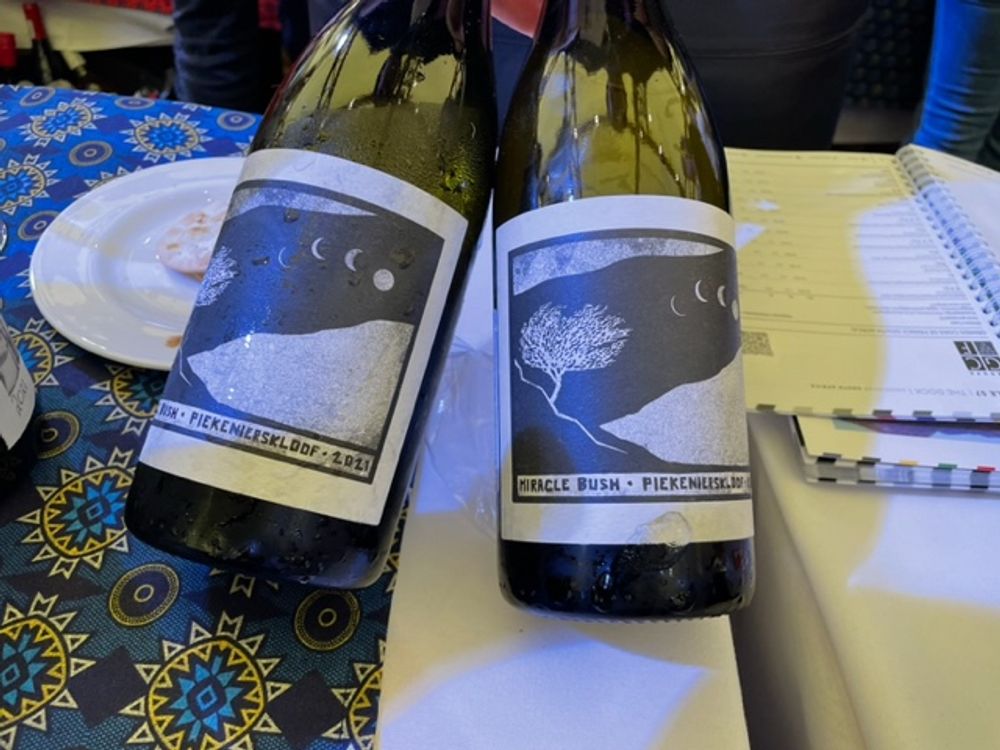
Miracle Bush White 2021
Also made by the Swartberg Wingerde, the Miracle Bush White is a blend of dry-farmed, bush wine Chenin (90%) and Palomino (10%). It’s bursting with lovely plump fruit (nectarines and peaches) and a hint of white pepper spice. There’s salinity here too and a sweet tang on the finish.
Waterkloof Cape Coral Mourvedre Rosé 2022
SA’s answer to Bandol and incredible value for money too. The stand-out rosé of the tasting; dry but generous with its fruit. Raspberry and strawberry notes rub up against a chalky bite and a rasping acidity to create a perfectly balanced rosé.
Lismore Pinot Noir 2021
My initial note on this wine simply reads ‘excellent’. Everything else is just an embellishment as that one-word review sums up Samantha O’Keefe’s signature Pinot Noir perfectly. But for the record… there’s fresh raspberry fruit, a delicate black pepper dusting and just a smidge of oak on the finish, which ‘tucks the tail in’ according to Samatha. Simply sublime.

Vilafonté Series C 2020
Unfortunately winemaker Mike Ratcliffe was laid up in his hotel room with the flu so couldn’t make the tasting, but his wines still shone without him. A longtime fan of Seriously Old Dirt, it was great to taste it alongside the Series M and Series C reds. Both are Bordeaux blends, but for me the Series C edged it on the day. A blend of Cabernet Sauvignon and Cabernet Franc it’s bold and rich but smooth and plush too; it hits with a velvet glove. The ripe black fruit is very primary right now but promises to age beautifully.
Boekenhoutskloof Franschhoek Cabernet Sauvignon 2020
2020 was a ripe year for Franschhoek and that’s reflected here; there’s an abundance of energy and verve in this wine. It’s still very young but the potential is overwhelming, there’s bright plum and blackberry fruit at the front end then liquorice and earth sweeps in before a smidge of graphite (pencil lead) makes a mark on the close. Delightful now, but better after a few more years on its side.
